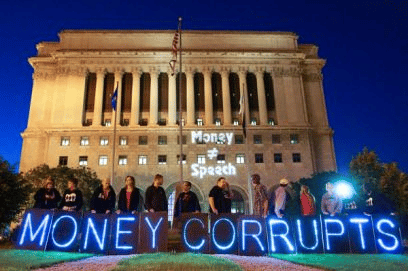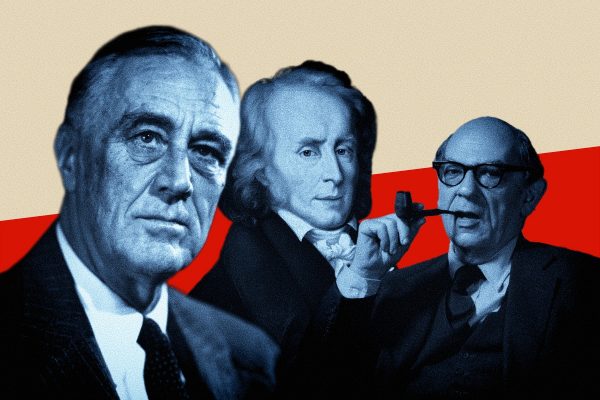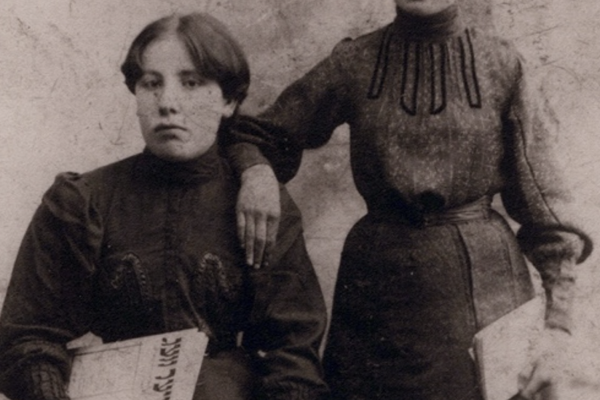Consider three of the most important stories from this month’s congressional elections. First, Republicans won the Senate handily. Second, voter turnout resembled 2010’s low figures (and may have actually undershot them), particularly among young and non-white voters. Third, these were likely the most expensive congressional elections ever, particularly in terms of spending by super PACs and other outside groups.
The connection between the first and second items is clear—an older, whiter electorate is a more Republican electorate—and has featured prominently in election post-mortems. What about the connections between first and third, or second and third? Did the flood of money doom the Democrats, or alienate potential voters enough to keep them from the polls?
The argument that money is corroding the public’s trust and rigging elections is familiar to anyone who receives email from progressive organizations or listens to Democratic stump speeches. Money, the rhetoric goes, makes candidates excessively dependent on the wealthy; fundraising monopolizes politicians' time, crowding out lawmaking and everything else; elections are won or lost on the basis of multi-million dollar attack ads funded by anonymous donors.
While there is a great deal of truth to these claims, the midterm results can’t be laid at the feet of big money. For one thing, most of the Democratic losses were not particularly close; the national popular vote would have needed to shift nearly three percentage points leftward for the Democrats to retain the Senate. Money matters at the margins, but this was not a marginal election. Second, Democrats had the money they needed to compete in nearly every hotly contested race, and liberal outside groups were only slightly outspent by conservatives. Although we don’t know the breakdown of outside spending that was not disclosed—upwards of $100 million according to the Wesleyan Media Project, the bulk of it by conservative groups like the Koch-linked Americans for Prosperity—that money was spent very early in the election cycle, when research suggests it should have the least impact on Election Day. Money may have had more of an impact on state and local elections, where spending is often much more one-sided, but the sheer amount of money in most high-profile federal races guarantees that whatever financial advantage one side may have is subject to diminishing returns.
Finally, the claim that money impairs the public’s faith in democracy, while plausible, can’t account for the fact that nearly all the half-century long decline in political trust took place well before the cost of elections really took off, over the last few election cycles. Voters regularly express concern over “big donors and secret money” when given the chance, but have shown little inclination to vote based on the issue—which is why Mayday PAC, Lawrence Lessig’s moonshot effort to elect candidates who favor reform, is off to a rocky start. It is telling that British voters voice the same discomfort with money in politics even though British elections cost the American equivalent of pocket change. The outrage at big money is just one element in public alienation from politics, not one of its main causes.
In short, while there is plenty to be said about money’s role in the midterms, it can’t be held responsible for the most prominent results and so risks being treated as old news. When spending records are being broken every cycle, at some point it becomes part of the background noise of election season. The most reliable way to drum up interest in a subject as familiar and dry as campaign finance is to come up with a counterintuitive take; consequently, expect the argument that money actually has positive effects on elections to crop up periodically over the next two years. This viewpoint is not limited to conservatives and libertarians who view campaign finance as a question of principle (money equals speech and speech should be free); the consequentialist case for money in politics is also worth considering. Competitive, broadly participatory elections are important, and important things are worth paying for. If money could be shown to promote informed participation in politics, then putting up with a barrage of negative super PAC ads every two years would be an appropriate price to pay.
At the New York Times’ “Upshot” blog, political scientist Lynn Vavreck has summarized some of the research supporting the view that money affects democracy positively. Among other things, money helps familiarize voters with candidates—particularly important in low-salience midterm elections—and is much more valuable to challengers than incumbents, perhaps implying that tighter campaign finance regulations would make for more uncontested races. (This is a longstanding contention of opponents of campaign finance regulation; hence the name of the Center for Competitive Politics.) Other research demonstrates that money can promote turnout when spent on person-to-person voter contact, at least in small-scale experiments—whether campaigns actually spend their money that way is another story.
If this argument holds water, it suggests tradeoffs between the goals of political regulation: What works for combatting corruption or politicians’ dependence on the wealthy may also make politics less competitive or less participatory. Even alternatives that do not seek to reduce the amount of money in the system, such as instituting public financing of elections or matching funds for small campaign contributions, may suffer from other drawbacks. Empowering small donors, who tend to be more ideologically extreme than established interests, risks increasing polarization, according to Adam Bonica and others.
While the tradeoffs are important to consider, all these defenses of money in politics are vulnerable to counterattack. The idea that money promotes participation suffers from the same deficiency as the argument that money damages trust in democracy. Rates of participation in politics are still at or near historic lows after decades of skyrocketing campaign spending. The midterms were just one more instance of campaigns spending astronomical sums to move a very small number of votes. Moreover, the fact that campaign spending increases voters’ recognition of candidates is not a very persuasive defense; politicians may appreciate money’s ability to build their brand with the electorate, but being able to pick your representative out of a lineup is much less important than knowing the basic issues at stake in an election.
That said, it is true that proponents of reform need to decide which political problems to prioritize, and the 2014 election is a great argument for prioritizing participation and turnout. Whatever effect reducing the amount of money spent would have had on the election—eliminating all the undisclosed spending, say—it would have been trivial compared to the effect of raising the turnout of young voters or Hispanic voters to the national average. The campaign finance system can only do so much to promote participation, but this does argue for empowering small donors, whether or not it contributes to polarization (besides, it’s not as though the current system has been very successful at producing moderation). Better and more complete disclosure of broadcast advertising might also induce campaigns to spend less on the airwaves and more on voter contact, which might improve turnout. Finally, even if money is not the main cause of voter apathy, the least campaigns could do is stop raising money in ways that disempower and alienate their most enthusiastic supporters, and start spending it in ways actually proven to increase turnout. Recent election cycles seem to demonstrate that candidates can and will devote most of their time to fundraising and still spend everything they raise, so “getting money out” of politics may simply be unachievable.
Of course, with divided government likely to persist for years to come, major political reforms of any stripe are less plausible than ever. The only prospect for serious change comes from the Supreme Court, which earlier this year overturned the cap on the amount individuals can give to candidates and parties in a single cycle, and which may soon reverse the twelve year old ban on unlimited “soft money” contributions to parties. Otherwise, expect more of the same—more money, more time spent fundraising, more creative ways to work around campaign finance restrictions—in 2016.








